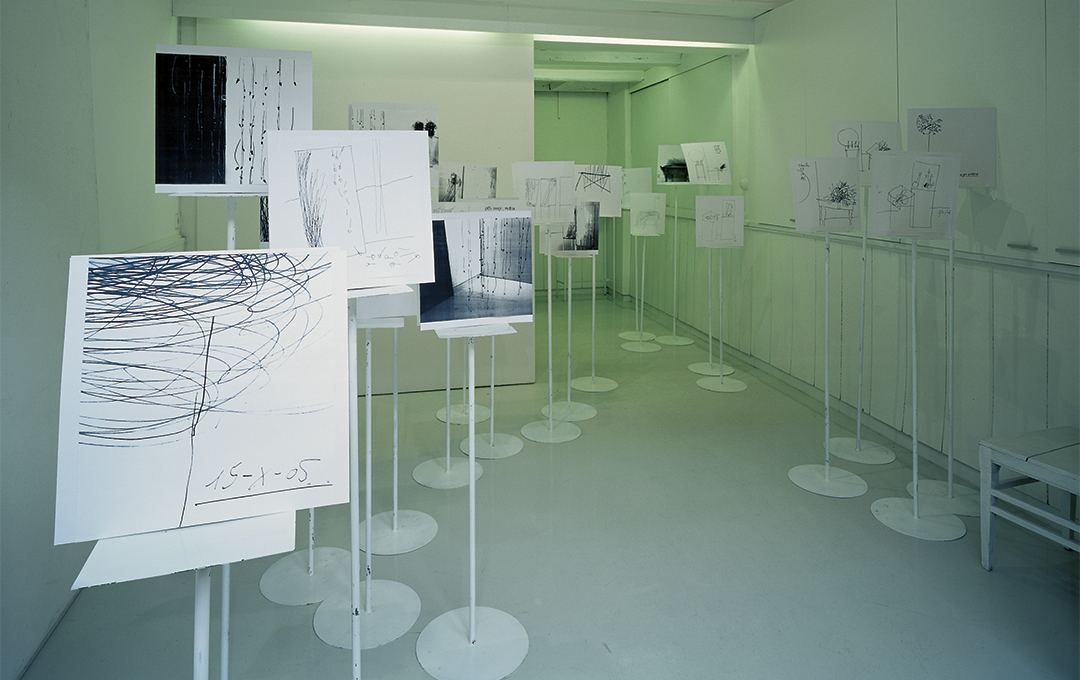Saša Šekoranja, Zagreb artist and florist, uses his artistic sensibility for colors, textures and composition freely and imaginatively in creating his flower arrangements and installations. In his many years of commercial work with flowers, although Šekoranja has not developed a recognizable personal style, from the very beginnings he has developed his own individual, unique flower culture, subject to constant change and rethinking. Over the course of time, flowers turned for Šekoranja into one of the media facilitating artistic expression. It is true this is a distinctive medium, because of the use of primarily natural materials, but this limitation also has its advantages. The imposed limitations still allow the play of variations and an ever better understanding of the mystery of the material, and in work with flowers, the visual messages and their significations cannot be separated from the eternal messages of the natural world in itself – the natural cycle of life and death, transformation and renewal. These are themes of diminishing interest in the contemporary visual arts, much more involved with the questioning of and theories on the complexity, size and dynamics of human culture, including the dynamics of art itself and its direct and indirect participation in social processes. Nevertheless, no matter how destroyed, polluted or neglected, nature is still all around us and still attracts the testimony of some artists. This is embodied in the demand for its protection against ever greater human aggression or in active interventions in the very landscape, as well as in the context of everyday urban life. Here it is possible to speak in a more intimate tone on the permanent yet mute presence of nature all around us and within us. As well as visual artists, there have been writers such as Marguerite Duras, who took an interest in the experimental film towards the end of her life. In her late literary works Duras wrote of roses in city parks, which, all unseen, “open their flowers, spread their perfume a few days and then die”. However, in her works Duras does not celebrate only this luxurious, mute flowering of nature. In her experimental film “Truck” she filmed long shots of the completely devastated landscape next to French highways, without any audio commentary, but visually significant, in order to show that over these ransacked and bare fields, the sun rises every morning and at night the darkness and fog come in with the same magnificence as ever.

Possibly due to his work with blooms, Šekoranja has stayed in tune with the nature that continues to flower and die all around us. This is why he incorporates into his flower arrangements and installations other elements aside from the ordered cut flowers, such as local spring garden peonies, summer grass, dried autumn common vetches or winter dried cut tree branches. I had a chance to be an intimate witness of and to photograph the processes of his work with flowers, as well as painting, drawing or preparing art installations in his studio. Over years of close cooperation I had the opportunity to get to know his ways and the rhythm of work in all the media he uses – the complexity and at the same time simplicity of expression, spontaneity but infallible sureness in the work process and the crucial decision “when to stop”. He himself says that he has always been aware that his work with flowers differs from other work in art only in the material and certain set frames and forms, but not in the very essence of the creation process.
However, until recently, his floral works tended to disappear rapidly from his shop and were lost in the rituals and spectacles of everyday life – in either private or public spaces, at various festivities, weddings, or in front of theatre curtains that come down on the play. Šekoranja knew this was not a relevant context for a deeper experience of his work, which has in it the ability to be something other than mere incidental decoration. He was aware that he actually very rarely had the opportunity to use his full creative freedom, and even less to define the context and space in which his floral works could grow in new directions and via communication with the public take on a different life.

Therefore in summer 2005, he decided to re-decorate his flower shop into a white cube, not to exhibit his flower arrangements as sales goods, as has become common in the fashion and footwear retail trade, rather to create his own gallery, right there on the street, in which to create his floral installations and at the same time to communicate with great immediacy with the audience, the passers-by.
Has he succeeded in his intentions? Two anecdotes might provide the answer. One was told by an acquaintance who was so thrilled with the redecorated space and the first installation of withered white roses that one night after a play he brought a friend to see it and spent more than half an hour there just talking. Then there was the young mother passing by with her baby in the pushchair who first stopped in front of the window, then squatted down and pointed for the baby to look inside. We are not sure whether she succeeded in this, but we are sure that her intention to share her experience was genuine and completely honest. Though these intimate stories are Šekoranja’s favourites, he admits he is surprised by the great number of passers-by who come into the shop daily, not to buy the flowers, but to ask permission to snap the new installation or to express their admiration of the unusual sights offered them by the display of this seemingly ordinary little shop in Ilica street.